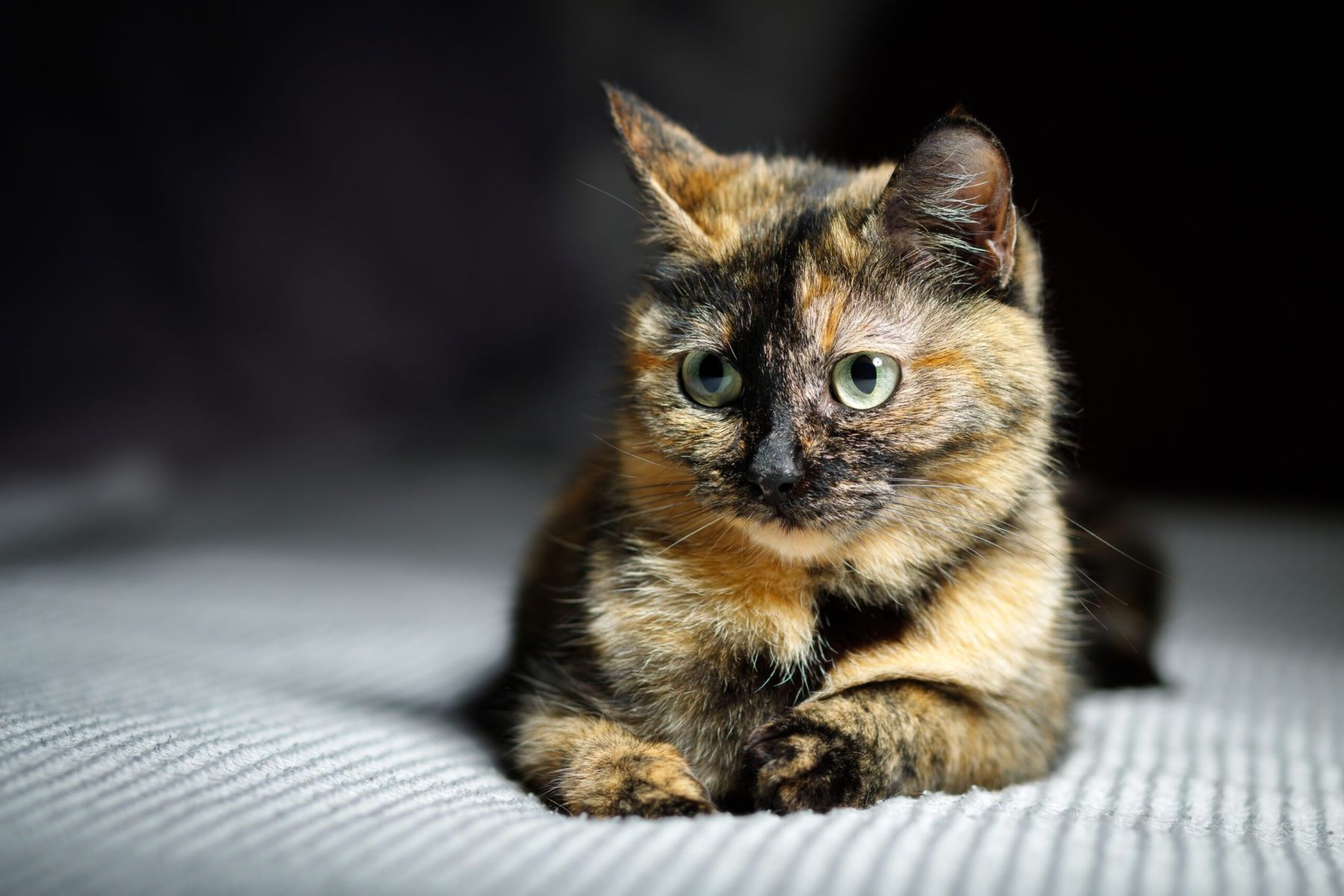
Ever wondered why tortoiseshell cats, often affectionately called "torties," seem to have such unique personalities? Is it true that no two torties have the same pattern? Well, yes, each tortoiseshell cat boasts a one-of-a-kind coat pattern, making them as unique as fingerprints! These feline beauties are not just about looks; they're shrouded in mystery and folklore. From being hailed as harbingers of good luck to their "tortitude," these cats are nothing short of fascinating. Ready to get your mind blown by some purr-fectly amazing facts? Let's dive into the colorful world of tortoiseshell cats and discover what makes them truly special.
Key Takeaways:
- Female tortoiseshell cats are unique due to their genetic makeup, making them almost always female. Male torties are rare and often sterile, making them special finds among cat lovers.
- Tortoiseshell cats, known for their colorful coats and strong personalities, are believed to bring good luck in many cultures. Caring for these unique cats involves providing love, playtime, and regular veterinary check-ups.
What Makes Tortoiseshell Cats Unique?
Tortoiseshell cats, often affectionately called "torties," are beloved for their distinctive multicolored coats that mix patches of black, brown, amber, red, cinnamon, and chocolate. Unlike most other feline fur patterns, tortoiseshell is not a breed but a coloration that occurs across many breeds. This unique coloring is due to the cat's genetic makeup, with the X chromosome carrying the gene for either orange or black fur. Female cats, with two X chromosomes, can express both colors simultaneously, leading to the tortoiseshell pattern. This brings us to our first fact:
- Nearly all tortoiseshell cats are female due to their genetic makeup. Male torties are rare and usually sterile.
The Rarity of Male Tortoiseshell Cats
-
Male tortoiseshell cats are an anomaly in genetics. They typically have an extra X chromosome (XXY), making them Klinefelter males, which is why they are often sterile.
-
Only about 1 in 3,000 tortoiseshell cats are male, making them incredibly rare finds among cat lovers.
Tortoiseshell Cats in Folklore and Culture
Tortoiseshell cats have a storied place in folklore and culture around the world, believed to bring good luck in many societies.
-
In Japanese folklore, tortoiseshell cats are considered to bring good luck, especially in protecting homes from ghosts.
-
English folklore suggests that rubbing a tortoiseshell cat's tail on warts will cure them.
-
In the United States, they're sometimes referred to as "money cats," with the belief they bring financial fortune to their owners.
Personality Traits of Tortoiseshell Cats
Tortoiseshell cats are not only known for their unique coats but also for their distinctive personalities, often described as "tortitude."
-
Many owners report that tortoiseshell cats have a more assertive and independent personality compared to other colorations.
-
Torties are known for their strong-willed and fiery temperaments, which can range from fiercely loyal to somewhat aloof with strangers.
Health and Lifespan of Tortoiseshell Cats
Since tortoiseshell is a coloration and not a breed, their health and lifespan can vary widely depending on the breed they belong to.
-
Generally, tortoiseshell cats are healthy and can live a long life with proper care, with an average lifespan of 10 to 15 years.
-
No scientific evidence suggests that tortoiseshell cats have different health issues than cats of other colorations.
Tortoiseshell Cats and Their Coats
The tortoiseshell pattern is one of the most varied among cats, with no two torties having the exact same coat pattern.
-
Each tortoiseshell cat's coat is unique, with endless variations in the pattern, color intensity, and distribution.
-
Some tortoiseshell cats have a brindled coat, where the colors are finely mixed, while others have large patches of color.
The Genetics Behind Tortoiseshell Cats
Understanding the genetics of tortoiseshell cats can be quite fascinating, as it explains why these cats have such diverse and beautiful coats.
-
The tortoiseshell pattern is a result of the interaction between two genes: one that determines the presence of orange fur and another that controls black fur.
-
Female cats with one orange and one black gene express both colors because of X-chromosome inactivation, a process where one of the X chromosomes in each cell is randomly turned off.
Tortoiseshell Cats Around the World
Tortoiseshell cats are found all over the world and are part of many different breeds.
-
Breeds that commonly exhibit the tortoiseshell pattern include the American Shorthair, British Shorthair, Cornish Rex, and Persian.
-
In many cultures, owning a tortoiseshell cat is seen as a sign of good luck and prosperity.
Caring for a Tortoiseshell Cat
Caring for a tortoiseshell cat is similar to caring for any other cat, but their unique personalities may require some adjustments.
-
Providing plenty of playtime and interaction is key to keeping a tortoiseshell cat happy, given their often playful and energetic nature.
-
A balanced diet, regular veterinary check-ups, and lots of love are essential for a tortoiseshell cat's well-being.
Tortoiseshell Cats and Their Social Behavior
Despite their reputation for having a bit of 'tortitude,' tortoiseshell cats can be very affectionate and social.
-
Many tortoiseshell cats enjoy being the center of attention and will actively seek out human companionship.
-
They can be very vocal, often 'talking' to their owners with a wide range of meows and purrs.
The Future of Tortoiseshell Cats
As genetics and breeding practices evolve, the future of tortoiseshell cats may see even more diversity in their coats and perhaps an increase in the rare male tortoiseshell population.
-
With advances in genetic research, we might one day understand more about how to predict or even influence the tortoiseshell pattern in cats.
-
Efforts in cat breeding and genetics may eventually make male tortoiseshell cats less rare, though they will likely always be a special find among cat enthusiasts.
Tortoiseshell Cats and Adoption
Given their unique beauty and personalities, tortoiseshell cats are often sought after for adoption.
-
Shelters often see a high demand for tortoiseshell kittens, though adults are sometimes overlooked.
-
Adopting a tortoiseshell cat can bring a lot of joy and a bit of good luck into your home, according to various cultural beliefs.
-
It's always recommended to adopt from shelters or rescue groups, where many tortoiseshell cats await loving homes.
The Impact of Tortoiseshell Cats on Art and Media
Tortoiseshell cats have made their mark not only in homes but also in art and media, celebrated for their stunning coats and spirited personalities.
-
Artists and photographers often feature tortoiseshell cats in their work, drawn to their striking appearance.
-
In literature and film, tortoiseshell cats are sometimes portrayed as mystical or magical creatures, further cementing their special place in culture.
The Importance of Spaying and Neutering
Given the rarity of male tortoiseshell cats and the importance of controlling the pet population, spaying and neutering are crucial.
-
Spaying and neutering not only help control the cat population but also prevent certain health issues.
-
These procedures can reduce the risk of some cancers and improve the overall health and lifespan of cats.
-
Encouraging responsible pet ownership, including spaying and neutering, is essential for the well-being of all cats, including the beautiful tortoiseshell.
A Final Purr on Tortoiseshell Cats
Tortoiseshell cats, with their unique coats and spirited personalities, are truly one-of-a-kind companions. These feline beauties not only bring a splash of color into our lives but also enrich them with their playful antics and affectionate nature. Remember, their "tortitude" is a testament to their strong-willed and independent character, making every day with them an adventure. Whether you're already a proud tortie owner or considering adding one to your family, these cats promise a life filled with love, laughter, and lots of purring. So, here's to celebrating the beauty and mystery of tortoiseshell cats, whose vibrant patterns and spirited personalities capture our hearts and homes.
Frequently Asked Questions
Was this page helpful?
Our commitment to delivering trustworthy and engaging content is at the heart of what we do. Each fact on our site is contributed by real users like you, bringing a wealth of diverse insights and information. To ensure the highest standards of accuracy and reliability, our dedicated editors meticulously review each submission. This process guarantees that the facts we share are not only fascinating but also credible. Trust in our commitment to quality and authenticity as you explore and learn with us.


